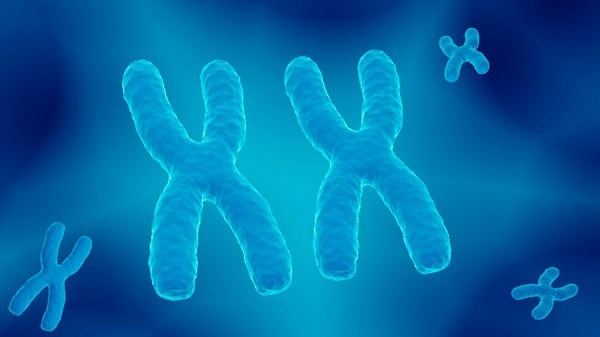Two protein complexes are involved in the mysterious process of shutting off one X chromosome in female mammals, according to a new study from RIKEN. This result could aid in the understanding of how specific tumors in women develop.

Illustration of two X chromosomes showing the female 23 chromosome pair. RIKEN researchers have discovered how two protein complexes turn off one X chromosome in female mammals. Image Credit: ARTUR PLAWGO/SCIENCE PHOTO LIBRARY
Females have a pair of X chromosomes, whereas men have one X chromosome and one Y chromosome. When compared to male mammals, females often exhibit better resistance to genetic diseases and cancers due to the redundancy of possessing two X chromosomes.
X-chromosome inactivation, a technique used by females to disable one of the X chromosomes, occurs throughout development. Women can develop serious health issues including breast cancer when this procedure goes wrong.
These types of tumor-fueling events in people could be prevented or treated with the help of improved knowledge of correct X-chromosome inactivation.
Using mouse embryos, a team under the direction of Haruhiko Koseki of the RIKEN Center for Integrative Medical Sciences (IMS) has recently shown how two protein clusters, polycomb repressive complex 1 (PRC1) and PRC2, play independent and significant roles in maintaining one X chromosome in the developing embryo in a dormant state.
Notably, the researchers discovered that only tissues supporting the embryo depend on PRC1 and PRC2 to maintain gene silencing on the inactive X chromosome However, embryonic tissues could accomplish this on their own without the help of these epigenetic regulators, necessitating the use of some other molecular machinery to do the same task.
This study points out differential features of two major tissue lineages in developing embryos.”
Osamu Masui, Laboratory for Developmental Genetics, RIKEN Center for Integrative Medical Sciences
By examining mice that were genetically modified to be deficient in either PRC1 or PRC2, the researchers were able to determine the roles played by each protein complex. These studies demonstrated how various PRCs alter the DNA’s winding in different ways to silence certain gene sets on the inactive X chromosome.
Both complexes are required for effective X-chromosome inactivation in extra-embryonic tissues that will develop organs such as the placenta. Both, however, are unnecessary in embryo tissue.
Masui added, “This study clearly demonstrates that both PRC1 and PRC2 independently accumulate on the inactive X chromosome and differentially maintain X-linked gene silencing. This finding could contribute to our understanding of how female-specific tumors form.”
The researchers are now attempting to identify the molecular processes that enable embryonic tissues to firmly maintain X-chromosome inactivation.
“These studies should help us further establish the fundamentals of gene regulation in the genome,” Masui concluded.
Source:
Journal reference:
Masui, O., et al. (2023). Polycomb repressive complexes 1 and 2 are each essential for maintenance of X inactivation in extra-embryonic lineages. Nature Cell Biology. doi.org/10.1038/s41556-022-01047-y